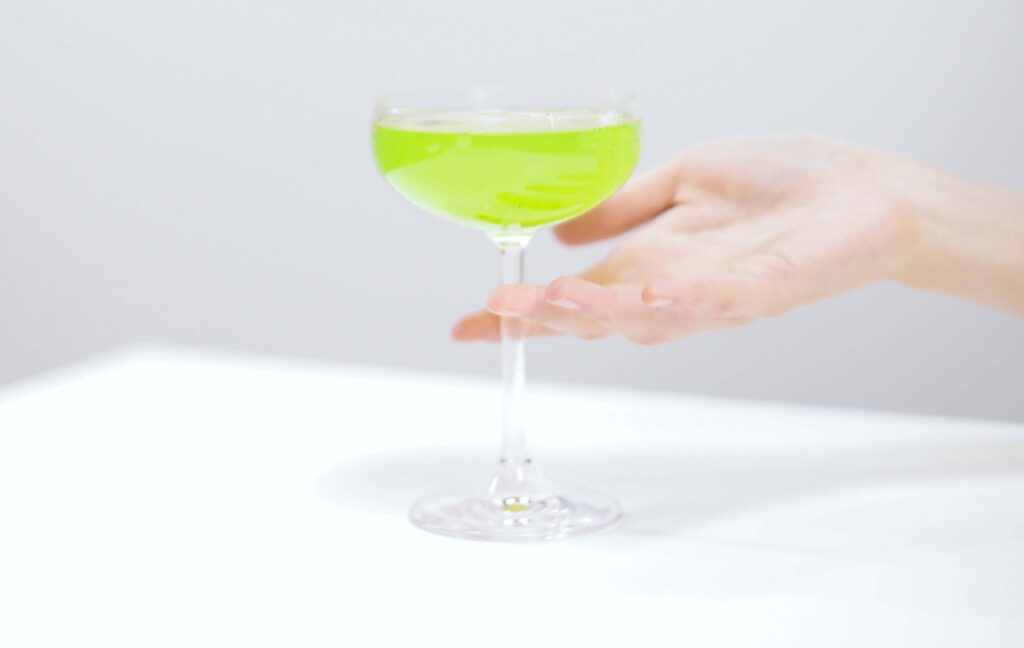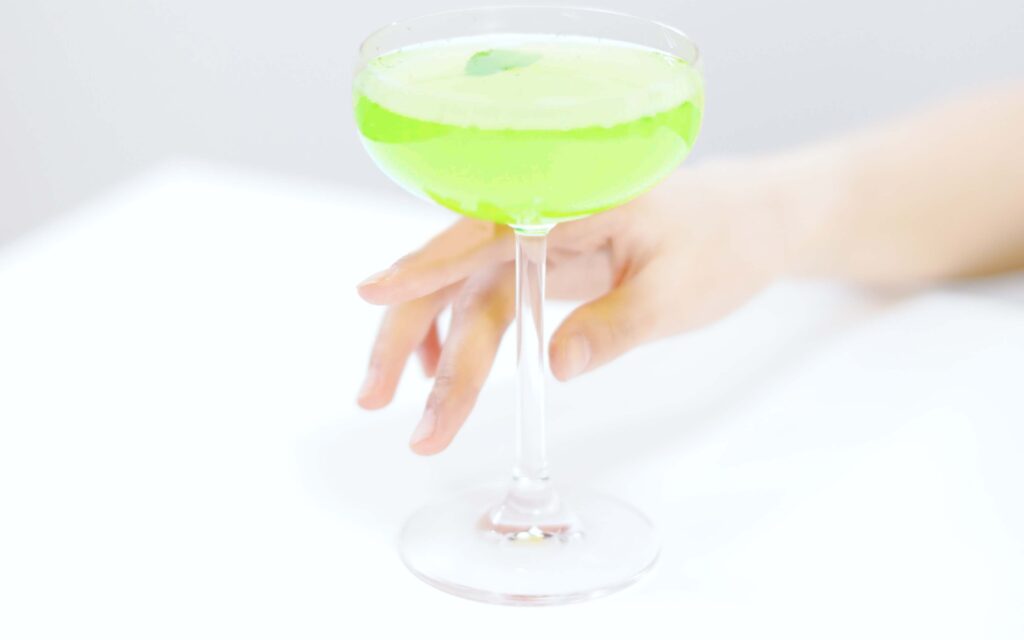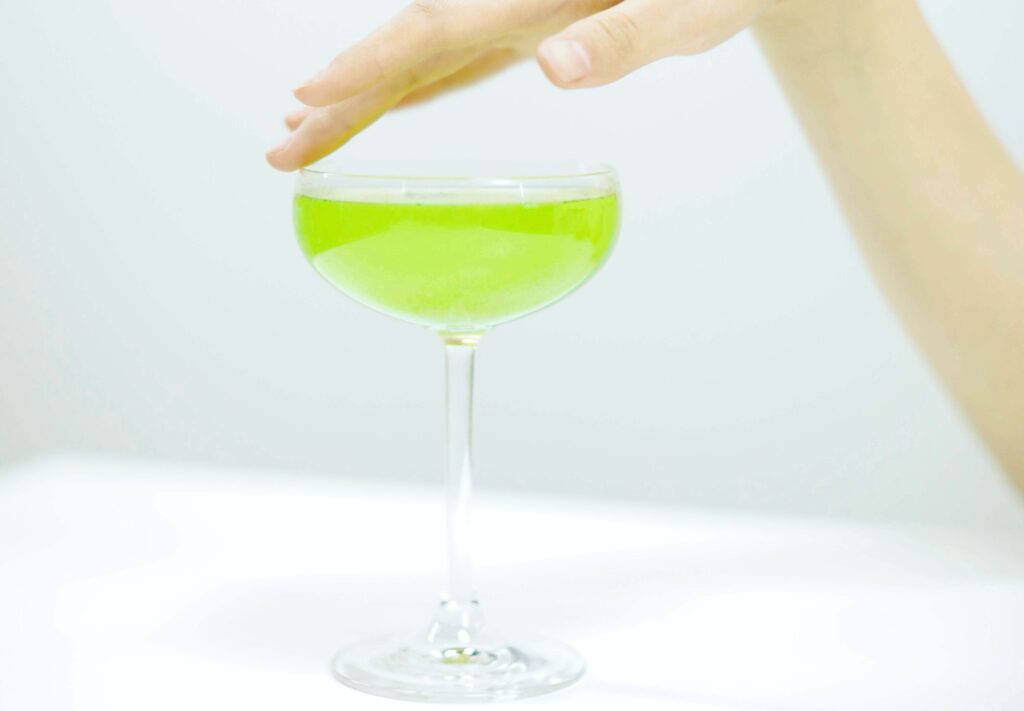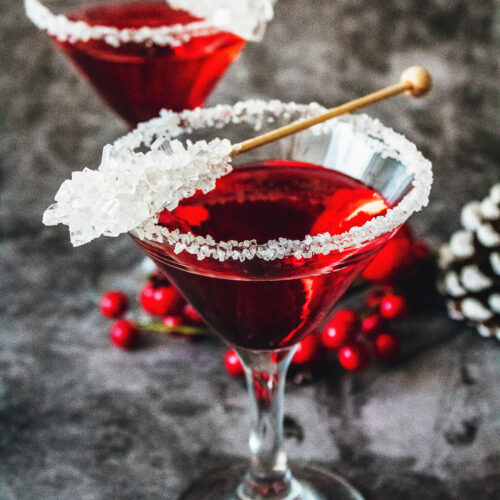Warning: May Cause Dancing on Tables and Sudden Urge to Learn Japanese
The Japanese Slipper cocktail is a refreshing and delightful drink perfect for any occasion. This vibrant chartreuse colored cocktail is made with Midori melon liqueur, Cointreau or triple sec, and fresh lemon juice, creating a sweet, tangy flavor that will tantalize your taste buds.
So, whether you’re a fan of fruity cocktails or just looking to try something new, the Japanese Slipper is definitely worth a try!
Here is a recipe for the Japanese Slipper cocktail:
Ingredients:
- 1 1/2 oz Midori melon liqueur
- 1 oz Cointreau or triple sec
- 1 oz fresh lemon juice
- Ice
- Lemon twist or melon ball for garnish (optional)

Instructions:
- Fill a cocktail shaker with ice.
- Add the Midori, Cointreau, or triple sec, and fresh lemon juice to the shaker.
- Shake vigorously for about 10-15 seconds until the outside of the shaker is frosted.
- Strain the mixture into a chilled martini or cocktail glass.
- Garnish with a lemon twist, melon ball, mint leaf or a maraschino cherry that sits on the bottom of the glass or add it on a cocktail pick if desired.
- Serve and enjoy!
This cocktail is easy to make and can be served in a chilled martini, coupe or cocktail glass, making it an excellent choice for any party or gathering.

TIP: You can adjust the proportions of the ingredients to your taste. Some variations call for a little more or a little less of one or more of the ingredients–it will also change the color of the cocktail. Also, feel free to experiment with different garnishes if you like!
Did you know?
One interesting fact about the Japanese Slipper cocktail is that its name is said to be inspired by a type of Australian tree frog called the “green tree frog,” which has a bright green color similar to the cocktail. The frog is also known for jumping long distances, just as the cocktail is known for its ability to pack a flavorful punch.
Another interesting fact about the Japanese Slipper is that it was featured in the popular television show “Sex and the City” in an episode titled “The Awful Truth.” In the episode, one of the characters orders a Japanese Slipper cocktail at a bar while she waits for her friends.
The cocktail’s appearance on the show helped to increase its popularity even more.

A little history:
The Japanese Slipper cocktail was created in the late 1980s by an Australian bartender named Jean-Paul Bourguignon. Bourguignon was experimenting with different cocktail recipes using Midori melon liqueur, a sweet, bright green liqueur made from Japanese muskmelons.
He combined the Midori with Cointreau or triple sec and fresh lemon juice to create a refreshing and flavorful drink. The cocktail became popular in the 1990s and was often served at trendy bars and nightclubs worldwide.
The Japanese Slipper cocktail is sometimes considered a variation of the classic Margarita cocktail. Both cocktails use triple sec or Cointreau as a sweetener and lemon or lime juice for acidity. However, the Japanese Slipper uses Midori melon liqueur instead of tequila as the base spirit, giving it a distinct fruity flavor and bright green color.
Regarding its popularity and influence, the Japanese Slipper cocktail can be seen as part of the more significant trend of sweet and fruity cocktails in the 1980s and 1990s, often made with flavored liqueurs and aimed at a younger and more diverse audience.
These days, the Japanese Slipper remains a classic cocktail that people around the world sip, savor and enjoy!
A Japanese Slipper:
A Japanese slipper or “geta sandals” (a traditional Japanese footwear similar to slippers) is a type of indoor slipper commonly found in Japan. It is typically made of lightweight and comfortable materials such as cotton, cloth, or velvet and has a simple design with a flat sole and an open back.
The slipper is designed to be easily slipped on and off, and it is commonly worn in traditional Japanese homes and guesthouses, as well as in some public spaces such as hot springs and temples.
They come in various bright colors and patterns. Some slippers may have decorative designs or embroidery, particularly those used in formal settings.



